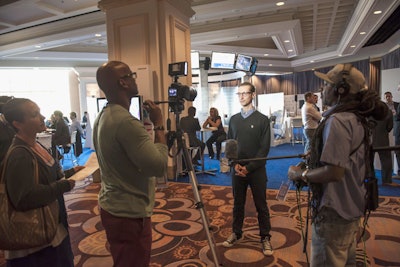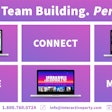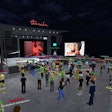
Videos are a critical piece of content marketing for events. According to Forrester Research's Dr. James McQuivey, a minute of video is worth 1.8 million words. Videos can be more engaging than text or still photos because they appeal to the senses of both sight and sound, and they are some of the most shared pieces of content on the web. Video content also generates search engine optimization: YouTube is the second-most-used search engine after Google, and it gets more than one billion unique visitors each month. Forrester forecasts that more than 90 percent of the online population will regularly watch online video by 2017.
For all of these reasons, smart planners are incorporating video production into the marketing strategy for their events. We asked three event professionals with experience in this area to share their ideas on effective ways to use video. Corbin Ball is a consultant, speaker, and writer on meeting technology topics; Jessica Levin is president of Seven Degrees Communications, a company that provides consulting and engagement strategies with a focus on social media and technology integration; and Chris Drury is president and chief creative officer of Drury Design Dynamics, a full-service communications company specializing in the planning and production of meetings and events. “A good video is worth a thousand pictures. If it’s done well it can be an extremely good promotional tool for an event,” Ball says.
Here are their ideas on how video can be used before, during, and after events.
Before the event
1. As part of your contract with speakers, ask them to create a video promoting their presentations.
2. Preview key topics that will be covered so attendees can start to prepare and develop questions. “Get people thinking about the actual education so they can take a proactive stake in their own learning,” Levin says.
3. Interview the event host about what’s new and interesting about this year’s event.
4. Ask your venue if it has a video you can use to familiarize attendees with the facility.
5. Ask the convention and visitors bureau if there is a video about the city, local attractions, and other important information.
6. Create a video showing a preview of the entertainment.
7. Provide informational videos on how to register, how to use the transportation system, and other topics that are helpful, particularly for first-time attendees. “It’s a less boring way to do the traditional ‘know before you go’ email,” Levin says.
At the event
8. Share highlights of educational sessions. “We try to shoot and edit and post as close to real time as we can to bring the event out to people to hype it up and to get those who weren’t able to attend excited so they attend next year,” Drury says.
9. Interview attendees on what they are enjoying and learning at the event.
10. If you have a trade show, create videos showing interesting exhibits and products.
11. Create videos at the networking and social events. “A really interesting way to do that is with drone video to record outdoor events,” Ball says.
12. Produce a highlight video of the entire event that can be shown at the closing session.
13. Encourage attendees to create videos that show how they are experiencing the event and to share them on social networks with the event hashtag.
14. Consider capturing longer-form content such as entire educational sessions and in-depth interviews that can be used in various ways after the event ends.
After an event
15. Review survey results to determine if attendees had questions that can be answered or requests for additional information that could be shared with a video. “People get frustrated when they fill out surveys and nobody acts upon them. So maybe you go back to a speaker and say can you record 20 minutes to help fill in the blanks. The learning never stops,” Levin says.
16. Develop a plan to share videos from the event—highlights of educational sessions and social events or interviews with presenters and attendees—periodically throughout the year to keep people engaged. “Pulse it out to continue to generate interest,” Drury says. "That’s a great time to talk to business partners and customers about the value of the event, where their business is going. Keep it a constant stream."
17. As you develop plans for the next event, share previews in videos.
Remember to distribute videos through multiple channels, including on the event website, through the host’s social networks (with the event hashtag), and on a dedicated YouTube channel. Also, the videos should be short, ideally no more than a minute. “There’s a level of expectation that short is right because we’re exposed to it in social media,” Drury says. "And keep them singularly focused. I’d rather get more videos on simple topics than longer videos trying to contain everything. They are meant to be bite-size portions, not the full meal."



















